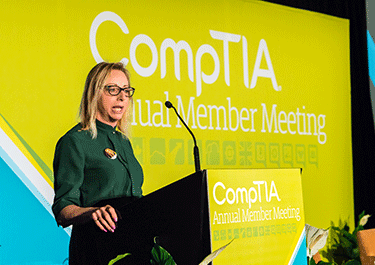 Last month, I attended a symposium on smart cities in Denver where the emphasis was on building communities and cities that can handle the 30 percent world population growth anticipated by the year 2050. This growth is expected to be centered in metropolitan areas that must be able to accommodate the population with less land available and more reliance on the necessary resources to sustain growth. The population in 2050 will have even more requirement of always-on. This means that they will need to be connected to technology real-time and all the time.
Last month, I attended a symposium on smart cities in Denver where the emphasis was on building communities and cities that can handle the 30 percent world population growth anticipated by the year 2050. This growth is expected to be centered in metropolitan areas that must be able to accommodate the population with less land available and more reliance on the necessary resources to sustain growth. The population in 2050 will have even more requirement of always-on. This means that they will need to be connected to technology real-time and all the time.
The event drew speakers from throughout Colorado, as well as Philadelphia, Orlando and Columbus. According to them, smart cities includes the following key areas:
- Smart grid – for energy efficiency.
- Smart health – for cleaner living.
- Sensor network – for a broad range of IoT sensors.
- Smart mobility – for safer and more efficient streets.
- City WiFi – for a connected community.
The most important first step described here was providing the network capacity or bandwidth to accommodate the various technologies that will be required to develop and sustain needed solutions. Some technologies will only require small pieces of bandwidth like monitoring on and off conditions of a switch. Others will require a lot of bandwidth; for example, for high definition video to monitor streets and intersections.
The following are examples of data usage and requirements:
According to Intel, one self-driving car will process four terabytes (TB) of data per day. This capacity must be available at a rapid speed to understand the environment around an autonomous vehicle.
The amount of data transmitted during the Super Bowl three years ago was 26 TB and last year that number almost tripled to 66 TB. This demonstrates the need to be able to move capacity depending on the time of day and day of week.
In Denver, 58,000 street lights are 99 percent owned and operated by the local electric utility company. This makes it more challenging to start a program to replace these with smart poles that would contain cellular transmitters, cameras and other sensors like daylight, weather and air quality.
So, consideration for managing the bandwidth will need to be automated and available as the demand is needed.
The Smart City Infrastructure Process
To build a smart city, organizations need to take a top-down and bottom-up approach. That breaks down like this:
- Connect – access and connectivity.
- Collect – collect the data from devices and sensors.
- Aggregate – bring various sources of data into one place.
- Analyze – analytics and intelligence to evaluate the data.
- Results – users, buildings, consumers to utilize the results.
Key Takeaways
Here are the five key things I learned here:
- Security will become even more critical as technology relies on an even broader range of information.
- Cities need to partner with the private sector to build, manage and maintain the technology where the city doesn’t have the budget or employees to have the depth of expertise required for these specialties.
- Owning the infrastructure is the key to a smart city being able to provide an ongoing revenue source to create economic development.
- Community leaders must have a framework for implementing smart cities
- The largest portion of the IoT market is in smart cities at 26 percent.
Modern technologies like small cellular sites carrying 5G technology, which will carry 1,000 times the capacity of current 4G technology, will help with the densification of the population and carry more information to a connected society. Find out what your city is doing to prepare your community for the next 30 years. Is there a plan or a wait and see approach? Cities that are not planning will fall behind in economic growth and therefore funds will be limited in the future.
CompTIA can play a role in setting standards for interconnectivity between devices to make it easier for IoT collectors and aggregators to evaluate dissimilar devices, as well as developing certifications for the apps required to aggregate and evaluate data. Government policy will play a role in taxation, privacy and security.
Click here to learn more about smart cities! And to get involved in CompTIA's Smart Cities Advisory council, click here.

 Add CompTIA to your favorite RSS reader
Add CompTIA to your favorite RSS reader

.gif?sfvrsn=d0e67b50_0)